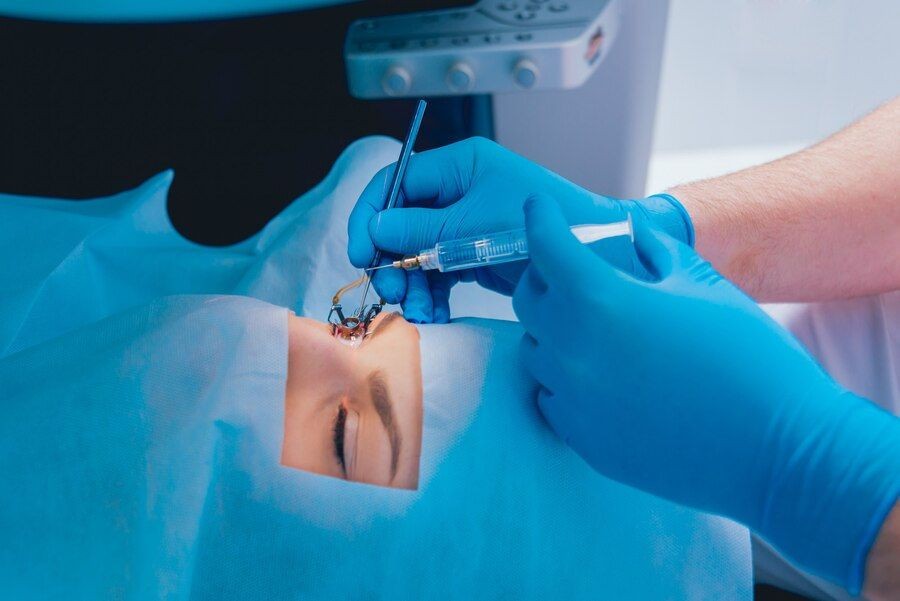
Contents
- 1 Photorefractive Keratectomy
- 1.0.1 What vision problems does PRK treat?
- 1.0.2 Who is a candidate for PRK?
- 1.0.3 How do I prepare for PRK?
- 1.0.4 What happens during the PRK procedure?
- 1.0.5 What follow-up care is needed after PRK? What is the recovery time?
- 1.0.6 What is the prognosis after PRK?
- 1.0.7 What are the potential side effects and complications of PRK?
Photorefractive Keratectomy
Photorefractive keratectomy (PRK) is a laser eye surgery that reduces the need for corrective eyewear by reshaping the cornea, changing the way the eye focuses light on the retina. An excimer laser ablates a thin layer of the cornea, changing its refractive power.
LASIK eye surgery is a similar procedure in which a medical professional creates a flap within the cornea and performs the ablation below the flap. In LASEK, a medical professional makes a thinner flap of just the outer layer and performs the ablation under the epithelium. There are pros and cons to consider when choosing between LASIK, LASEK, and PRK. In terms of cost, PRK is usually less expensive than LASIK. Postoperative discomfort is typically less with LASIK. The choice comes down to which procedure will produce the safest and most reliable outcome, based on factors such as corneal health and refractive error.
What vision problems does PRK treat?
PRK can treat myopia, hyperopia, astigmatism, and certain medical conditions affecting the eye’s surface. When used to treat these indications, the procedure is referred to as phototherapeutic keratectomy (PTK).
Who is a candidate for PRK?
The ideal candidate has well-suited corneal tissue and meets specific criteria. Corneal thickness is important, as larger corrections may require more tissue ablation. The eye doctor reviews the medical history and performs an eye examination to identify any factors that may affect the outcome. Age is another consideration, as a candidate’s eyes should be fully grown and stabilized.
How do I prepare for PRK?
The eye surgeon will determine if your eyes are suitable for PRK surgery in a preoperative screening. You may need to stop wearing contact lenses to allow your cornea to return to its natural state. On the day of surgery, avoid wearing makeup or perfume and have your postoperative medications ready.
What happens during the PRK procedure?
The patient lies on their back, and the surgeon numbs the eye with anesthetic drops. The surgeon removes the outer layer of the cornea and applies the laser to precisely ablate a thin layer of tissue. Once the laser ablation is complete, a contact lens is placed as a "bandage." This lens is removed once the epithelium heals.
What follow-up care is needed after PRK? What is the recovery time?
After surgery, you will need someone to drive for you and should have sunglasses for light sensitivity. You will be instructed to use prescription medicated eye drops to control inflammation and prevent infection. Expect some eye pain and attend all scheduled follow-up appointments for close monitoring of the healing process.
What is the prognosis after PRK?
The success rate is usually very good, with stable refraction achieved in the weeks and months following the procedure. Flap-related complications are not a concern with PRK. Over time, there may be a need for corrective eyewear again, and re-treatment with further PRK is often possible. Presbyopia may require the use of reading glasses for patients over the age of 40.
What are the potential side effects and complications of PRK?
Common side effects include discomfort, dry eye, blurred vision, and glare or haloes around lights, which typically resolve as the eye heals. Under-correction or overcorrection can occur. Uncommon but potentially serious complications include infection, irregular shape, thinning of the cornea, elevated intraocular pressure, scarring, and persistent corneal erosions. These complications have become less common with improvements in preoperative screening and better medication regimens for healing.
Sources: Clin Ophthalmol, Clinical & Experimental Optometry, Survey of Ophthalmology


